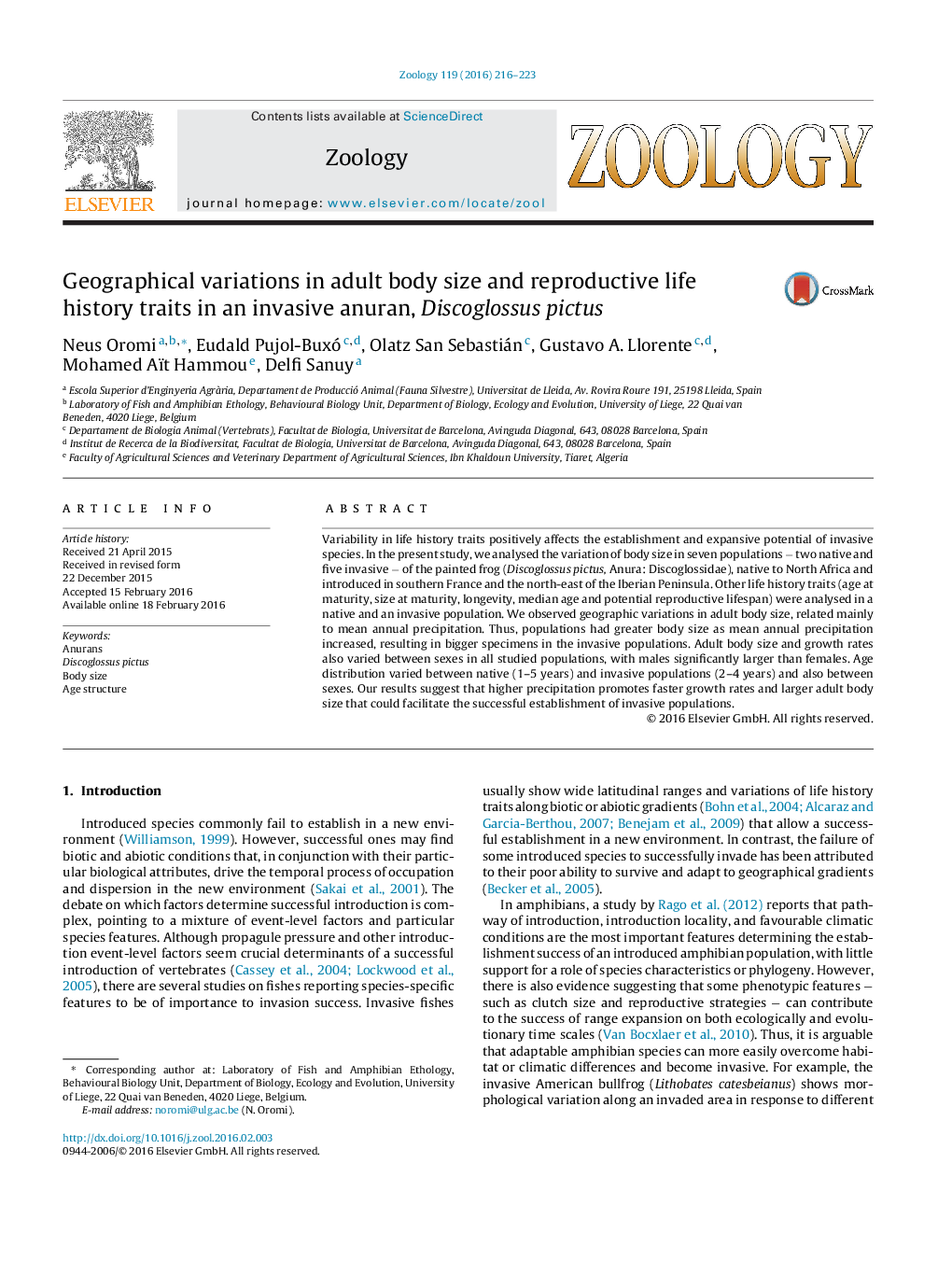| Article ID | Journal | Published Year | Pages | File Type |
|---|---|---|---|---|
| 2790966 | Zoology | 2016 | 8 Pages |
•We analysed the variation of body size in various populations of the painted frog (Discoglossus pictus).•We compared several life history traits of a native and an invasive population.•Geographical variations in adult body size were related mainly to mean annual precipitation.•Higher precipitation seems to promote faster growth rates that might facilitate the successful establishment of an invasive population.
Variability in life history traits positively affects the establishment and expansive potential of invasive species. In the present study, we analysed the variation of body size in seven populations − two native and five invasive − of the painted frog (Discoglossus pictus, Anura: Discoglossidae), native to North Africa and introduced in southern France and the north-east of the Iberian Peninsula. Other life history traits (age at maturity, size at maturity, longevity, median age and potential reproductive lifespan) were analysed in a native and an invasive population. We observed geographic variations in adult body size, related mainly to mean annual precipitation. Thus, populations had greater body size as mean annual precipitation increased, resulting in bigger specimens in the invasive populations. Adult body size and growth rates also varied between sexes in all studied populations, with males significantly larger than females. Age distribution varied between native (1–5 years) and invasive populations (2–4 years) and also between sexes. Our results suggest that higher precipitation promotes faster growth rates and larger adult body size that could facilitate the successful establishment of invasive populations.
